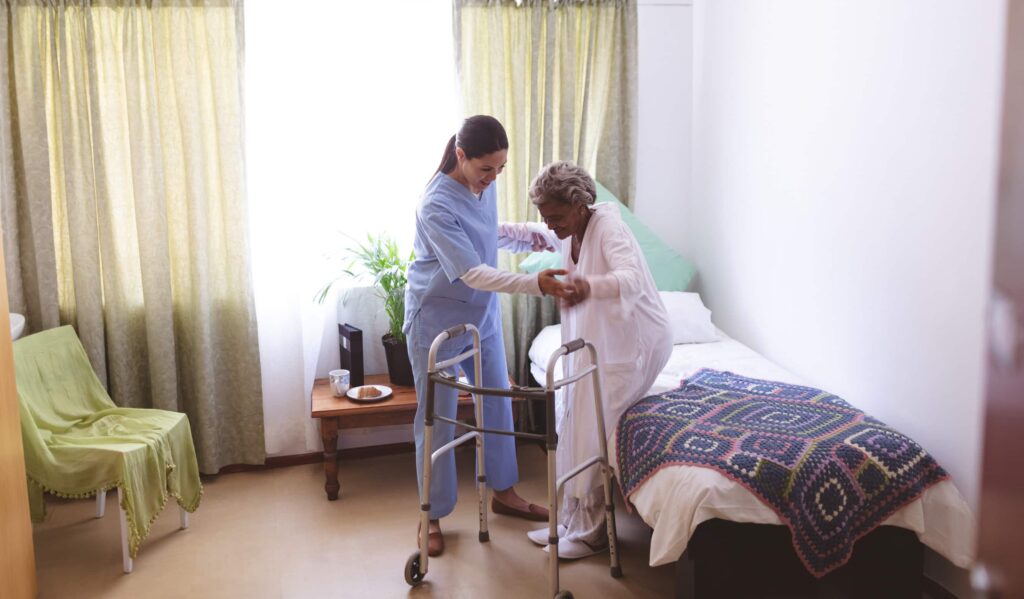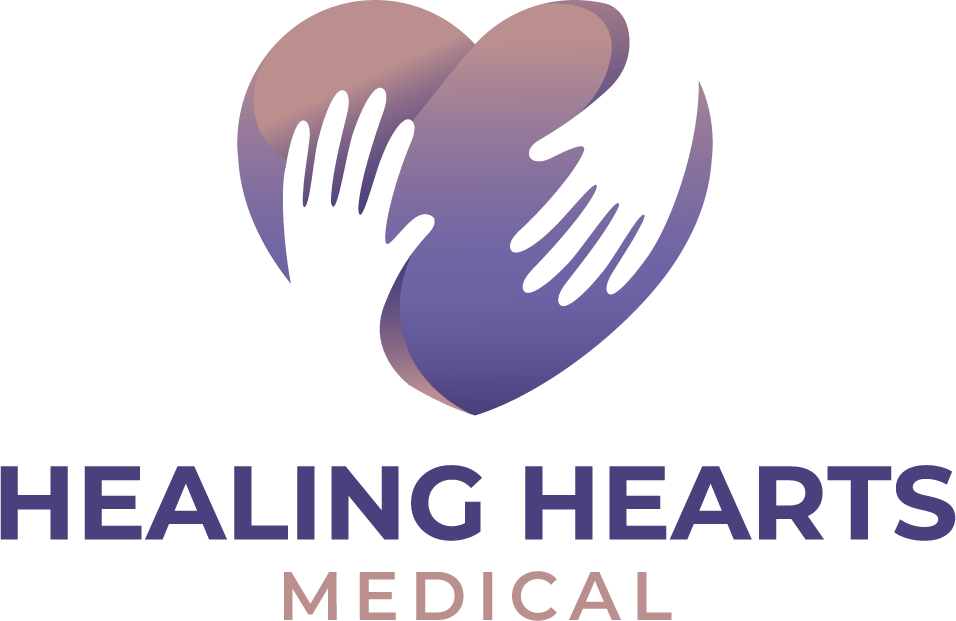When you’re managing the shift from hospital to home in Dallas, it’s crucial to focus on discharge planning and communication with healthcare providers. Don’t underestimate the importance of discussing medications and follow-up appointments. Engaging with family for support, utilizing community resources, and incorporating technology like telehealth can greatly aid recovery. By adhering to medication schedules and maintaining open communication with your medical team, you can guarantee a successful post-hospitalization experience. Curious about the next steps?
Understanding the Discharge Process
Although leaving the hospital can be an overwhelming experience, understanding the discharge process is vital for a smooth shift. You need to focus on discharge planning, which guarantees you have a thorough plan for your continued care. Start by discussing your needs with your healthcare team. They’ll guide you through your medications, follow-up appointments, and any necessary equipment or services. Patient advocacy is important here; don’t hesitate to ask questions or express concerns. Your well-being is the priority, and it’s important you feel confident about the next steps. Keep a checklist to make sure nothing is overlooked. Remember, your healthcare team is there to support you, making certain your shift from hospital to home is as seamless as possible.
The Importance of Effective Communication for Seniors

When shifting from hospital to home, effective communication is vital for guaranteeing you understand your discharge instructions clearly. It’s important to engage in an open dialogue with your healthcare providers, asking questions and expressing any concerns you may have. By doing so, you can help prevent misunderstandings and guarantee a smoother recovery process at home.
Clear Discharge Instructions
Despite the whirlwind of activity surrounding a hospital discharge, clear instructions are essential for a smooth change home. You might feel overwhelmed, but having a detailed discharge checklist can make all the difference. This checklist guarantees nothing gets overlooked, covering everything from medication schedules to follow-up appointments. Instruction clarity is key, so don’t hesitate to ask questions if you’re unsure about anything. Make certain you understand each step you need to take once you’re home. Clear instructions help prevent complications, reduce anxiety, and promote recovery. Remember, there’s no need to rush; take your time reviewing the information. Making sure you’re confident about your next steps will make your change more manageable and help you settle back into your routine with peace of mind.
Patient-Provider Dialogue
An open line of communication between you and your healthcare provider is essential for a seamless change from hospital to home. Addressing your patient concerns clearly helps prevent misunderstandings and guarantees you’re well-prepared for the transition. Start by listing any questions or issues you have before your discharge. It’s your right and responsibility to express these concerns openly.
Equally important is provider feedback. Listen intently as your healthcare provider offers guidance customized to your specific needs. They’ll provide practical advice on managing medications, follow-up appointments, and lifestyle adjustments. A proactive dialogue fosters trust and empowers you to take charge of your recovery. Remember, effective communication is a two-way street, it’s essential for you to voice your concerns and understand the feedback provided.
Coordinating Care With Healthcare Providers
As you prepare to return home, coordinating with your healthcare providers is essential for a smooth changeover. Make certain you understand your discharge instructions, schedule any necessary follow-up appointments, and clarify your medication management plan. By taking these steps, you guarantee continuity of care and support your recovery journey.
Communicating Discharge Instructions
Effective communication of discharge instructions is vital to guaranteeing a seamless shift from hospital to home. When you’re discharged, understanding your care plan is significant. Discharge education involves engaging with healthcare providers to grasp treatment details and follow-up care. Using clear, concise instructions helps prevent confusion and promotes patient engagement. Here are some key points to focus on:
- Medication guidelines: Know what to take, when, and how much.
- Dietary recommendations: Understand any new dietary restrictions or suggestions.
- Activity limitations: Be aware of any limitations or exercises you should follow.
- Signs of concern: Learn which symptoms require immediate attention.
- Contact information: Keep important phone numbers handy for any questions.
Taking these steps guarantees you leave the hospital confident and prepared.
Scheduling Follow-Up Appointments
Coordinating follow-up appointments is an important step in guaranteeing your continued recovery and health management once you leave the hospital. Start by contacting your healthcare providers to arrange necessary appointments. Make sure you know the purpose of each visit and any preparations needed. Utilize appointment scheduling tools to track your commitments; these can include apps or a simple calendar. Be sure to set follow up reminders, so you never miss an important meeting. It’s helpful to confirm appointment details a day in advance to avoid any mix-ups. Don’t hesitate to ask questions about your care plan; clear communication with your providers is vital. With organized planning, you’re taking proactive steps towards a smoother recovery journey and improved health outcomes.
Ensuring Medication Management
When shifting from hospital to home, managing your medications effectively is essential for a successful recovery. First, confirm medication reconciliation is completed with your healthcare provider to avoid potential errors. You’ll need a clear understanding of each medication’s purpose, dosage, and timing. Adherence strategies should be implemented to help you take your medications consistently. Here are some tips to help:
- Create a medication schedule: Use a pill organizer or digital reminders to track doses.
- Communicate with your healthcare team: Always report side effects or concerns.
- Understand your prescriptions: Know why you’re taking each medication.
- Keep an updated medication list: Share it with all your healthcare providers.
- Involve family members or caregivers: They can offer support and reminders.
These steps will help confirm a smooth, safe change.
Leveraging Community Resources and Support
Steering the journey from hospital to home can be challenging, but tapping into community resources and support can make the change smoother. By connecting with community partnerships, you’ll find valuable resource directories and local support options. Volunteer services often provide transportation assistance, ensuring you get to health appointments on time. Health education and wellness programs are essential, equipping you with knowledge for a healthier lifestyle. Don’t overlook caregiver networks, which offer emotional and practical support.
| Resource Type | Benefit |
| Community Partnerships | Access to resource directories |
| Volunteer Services | Transportation assistance |
| Caregiver Networks | Emotional and practical support |
Each resource plays a critical role in ensuring a seamless change, enhancing your well-being and independence as you adapt to life at home.
The Role of Family and Caregivers

Understanding the essential role that family and caregivers play in the shift from hospital to home is fundamental. Their support guarantees a smoother change and reduces readmission risks. As a family member or caregiver, your involvement is key in offering emotional and practical assistance. Here’s how you can help:
Family and caregivers are crucial in ensuring a smooth transition from hospital to home.
- Coordinate care by managing appointments and medication schedules.
- Emotional support is important; provide encouragement and a listening ear.
- Monitor recovery by keeping an eye on symptoms and progress.
- Communicate effectively with healthcare professionals to stay informed.
- Assist with daily tasks like meal preparation and household chores.
Your proactive family involvement and caregiver support make a significant difference in the recovery process, fostering comfort and independence for your loved one.
Utilizing Technology for Better Outcomes
As you provide essential support during the move from hospital to home, integrating technology can further enhance recovery outcomes. Telehealth consultations offer convenient, real-time access to healthcare professionals, enabling you to address concerns without leaving home. These virtual visits save time and reduce stress, allowing more focus on your loved one’s comfort.
Remote monitoring devices track crucial signs and other health indicators, providing critical data to healthcare teams. This continuous oversight helps catch complications early, ensuring timely interventions. You’ll find peace of mind knowing medical professionals can respond swiftly to any changes in condition. Emphasizing technology in care coordination fosters a safer shift, bridging the gap between hospital and home while empowering you to support your loved one effectively.
Developing a Personalized Care Plan
When planning for your loved one’s shift from hospital to home, developing a personalized care plan is essential. You want to guarantee they receive the best support possible. Start by conducting personalized assessments to understand their unique needs. This helps you design customized interventions that promote well-being and independence. Focus on:
- Medical Needs: Identify medications, therapies, and follow-up appointments.
- Daily Activities: Assess their ability to perform daily tasks and provide necessary assistance.
- Emotional Support: Recognize emotional challenges and offer resources like counseling.
- Safety: Evaluate the home for potential hazards and make modifications if needed.
- Community Resources: Connect with local services for additional support and companionship.
These steps guarantee a smooth change, promoting comfort and recovery at home.
Monitoring and Preventing Potential Complications
After crafting a personalized care plan, it’s important to focus on monitoring and preventing potential complications. You’ll need to stay vigilant about symptom monitoring. Keep a detailed log of any changes in health, such as unusual pain, swelling, or fever. This helps you catch issues early. Regularly scheduled follow-up appointments with your healthcare provider are essential for ongoing assessment and early intervention.
For effective complication prevention, make sure you take medications as prescribed and follow dietary recommendations. Encourage open communication with your medical team; never hesitate to ask questions or express concerns. In Dallas, utilizing local resources like home health services or support groups can provide additional layers of support. Remember, proactive efforts in monitoring and prevention can greatly enhance recovery and well-being.
Frequently Asked Questions
What Are the Financial Implications of Transitioning From Hospital to Home Care?
When considering shifting from hospital to home care, you should evaluate insurance coverage and anticipate out-of-pocket expenses. Assess your plan’s details to avoid unexpected costs and guarantee a financially smooth shift while prioritizing your loved one’s well-being.
How Can Patients Manage Their Medications Effectively at Home?
To manage your medications effectively at home, use medication reminders and track dosages meticulously. Set alarms on your phone, use pill organizers, and consult with your pharmacist to guarantee you’re adhering to your prescribed regimen accurately.
What Transportation Options Are Available for Follow-Up Appointments?
You’ve got several transportation options for follow-up appointments. Consider using ambulance services for medical needs or rideshare options like Uber and Lyft for convenience. Plan ahead to guarantee timely arrival and reduce stress.
How Do Cultural Differences Impact the Transition Process?
Cultural differences impact changes by influencing beliefs and creating language barriers. You must understand cultural beliefs and address language barriers to guarantee clear communication, respect traditions, and provide patient-centered care that eases the change process effectively.
What Dietary Changes Should Be Considered During the Transition?
During the changeover, you’ll need to focus on meal planning that accommodates any dietary restrictions. Consider incorporating nutritional supplements if necessary to guarantee balanced nutrition, while adjusting meals to your specific health needs and preferences.
Conclusion
To guarantee a smooth changeover from hospital to home, focus on open communication and detailed planning. Engage with healthcare providers, involve family, and don’t hesitate to use community resources. Stay on top of medication schedules and utilize telehealth for ongoing support. Healing Hearts Home Care can be a valuable resource, offering personalized assistance with medication management, daily living activities, and transportation to appointments, ensuring a seamless transition and continued well-being. By creating a personalized care plan and monitoring for complications, you’ll foster a supportive environment for recovery. Remember, you’re not alone in this journey, reach out and embrace the support available to you.

